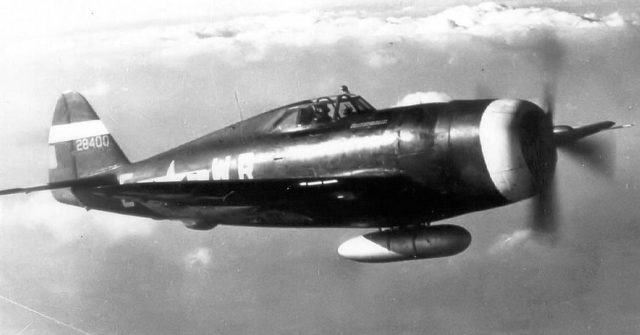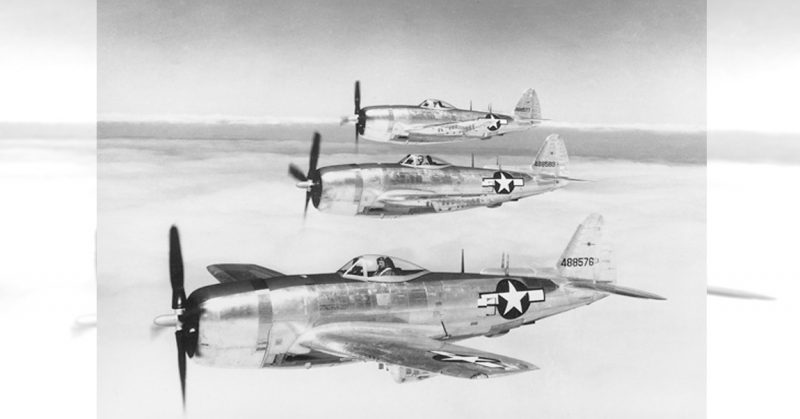Ronald Bade served in the US Army from 1943 to 1945. He flew 122 fighter-bomber missions in Europe during World War II while he was stationed in Italy. It’s been more than 70 years since those days, but he still remembers it vividly.
He enlisted in the Army because he liked to be outdoors. He says his brother was in the artillery and he was outside for the entire winter.
As part of the 345th fighter squadron, known as the Devil Hawks, he flew a P-47 Thunderbolt “Razorback” fighter plane over the Po Valley which runs 400 miles east-west in central Italy.
He stopped by the Oakland County International Airport this week to share stories with local pilots and veterans at Royal Air, a family-owned private charter company.
Bade brought some old photos of himself in the war which he shared with the audience while he shared his stories.
For almost an hour, he sat in a swivel chair, sipped on a Coke and recalled the days when he flew over the Italian countryside as if they were yesterday.
Two of his brothers also served in the military, but Bade was the only one to become a pilot.
He had a neighbor who wanted to enlist and not wait to get drafted. He thought that was a good idea, so the two of them enlisted. About that time his older brother was drafted.
Bade enlisted at 18 years of age, was drafted six months later and flying a few years later.

After starting his military career at Fort Wayne in Detroit, he was moved to a base in Omaha, Nebraska. He trained on a Fairchild PT-19 at the Jefferson Barracks Military Post in Lemay, Missouri, before he graduated from cadets and left for Italy in late 1944.
He flew two to three missions a day, every day of the week while in Italy, for a total of 122 missions, most of them offensive.
Bade said that most of the pilots were allowed to go home after 90 missions. But they didn’t get to stay long. “You would go back to your nice home, everything is fine and dandy and then 30 days later, guess what happens? You’re still in the army boy; you’re going to the Pacific,” Bade recalls.
He liked the weather in Nothern Italy, so he declined to go home.
Kirt Kostich is the president of Royal Air. Bade is a friend of a friend, which is how the two got to know each other and to plan the talk.
Kostich says that Bade was excited to come out and talk about his experiences. He’s impressed with what Bade went through in the war and amazed at how much he can still recall.
When Bade left Italy, the war wasn’t over yet. He was shot down, and anyone who had been shot down was not allowed to remain in that theater of operation.
When asked if he had flown since leaving Italy, he was quite clear. His service was over when he left Italy, Oakland Press reported.
“No, I came to the conclusion that if you fly long enough, you’re going to kill yourself,” Bade said.
